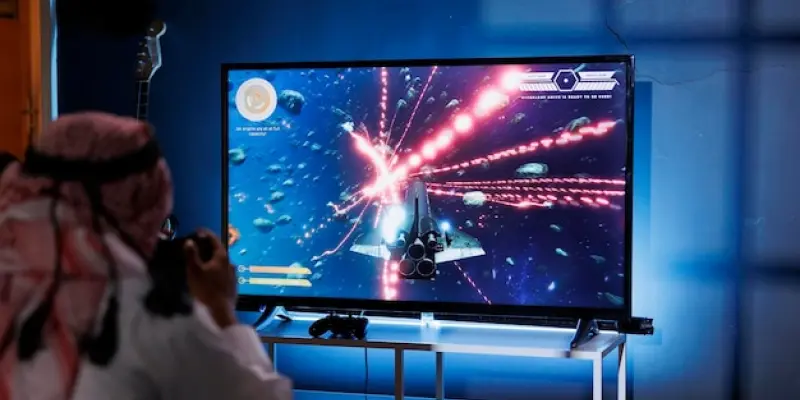Samsung’s innovative advancements in OLED TV technology signal a transformative era for gamers, with its 2025 models promising significant changes. As Samsung unveils its new lineup of OLED TVs integrating Nvidia’s G-Sync, the gaming landscape stands poised for evolution. This crucial addition facilitates seamless interaction with Nvidia graphics cards by optimizing Variable Refresh Rate (VRR) use, which has become indispensable for enhancing smoothness in gaming visuals. Initially exclusive to the flagship model, the S95F, this advanced feature is expected to set a benchmark, influencing subsequent models such as the S95D, S90D, S85D, S90F, and S85F, which are anticipated to receive updates later in the year.
Industry Trends and Technological Convergence
The residential entertainment sector observes an intriguing trend as both G-Sync and FreeSync technologies inch closer to interchangeability, reflecting a broader industry movement. Samsung’s OLED TVs now embrace not just the FreeSync standards but are also pivoting towards G-Sync, thus broadening compatibility across various device platforms. While overlapping functionalities exist between these VRR technologies, their distinctive features continue to drive innovation. FreeSync Premium Pro, for instance, champions HDR capabilities alongside elevated refresh rates and low frame rate compensation, creating a dynamic viewing environment. In contrast, environments equipped with G-Sync hardware unveil exclusive benefits like variable overdrive ghost reduction. Distinctions among these technologies manifest in features like ULMB2, powered by Nvidia’s proprietary enhancements, therefore offering potential distinction between TV and monitor gaming experiences.
Enhancing the Gaming Experience with Advanced Features
The promise of enhanced gaming experiences lies not only in the inclusion of G-Sync but also through a suite of accompanying features that the S95F proudly exhibits. Features like Auto Low Latency mode and AI Auto Game Mode are tailored to optimize game settings according to genre specifics, ensuring users receive an optimal setup irrespective of the game type. Beyond software optimizations, hardware advancements such as Samsung’s OLED Glare-Free technology and high-brightness HDR redefine viewing standards. These OLED TVs are equipped with HDMI ports that can manage refresh rates exceeding 165Hz in 4K resolution, thanks to Motion Xcelerator technology. Moreover, Samsung’s strategic addition of the Samsung Gaming Hub offers users access to cloud gaming platforms and other integrated enhancements, making these OLED TVs the cornerstone of modern home entertainment systems, meeting the growing demands of today’s tech-savvy consumers.
Market Impact and Future Considerations
Samsung is ushering in a new era for gamers with its groundbreaking OLED TV technology, poised to significantly impact gaming by 2025. The latest models promise to transform the gaming experience, especially with the integration of Nvidia’s G-Sync. This incorporation marks a pivotal development for gamers, as it enhances the interaction between TVs and Nvidia graphics cards. By optimizing Variable Refresh Rate (VRR) usage, the performance of gaming visuals becomes remarkably smooth, which is crucial for an immersive experience. Starting with the flagship model, the S95F sets a new standard in the industry. It is anticipated that other models like the S95D, S90D, S85D, S90F, and S85F will be updated later in the year to include this advancement. This widespread update suggests a future where smooth, high-quality gaming is not just limited to the flagship model but is accessible through various OLED TV options from Samsung, thereby shaping the future of gaming TV technology.

